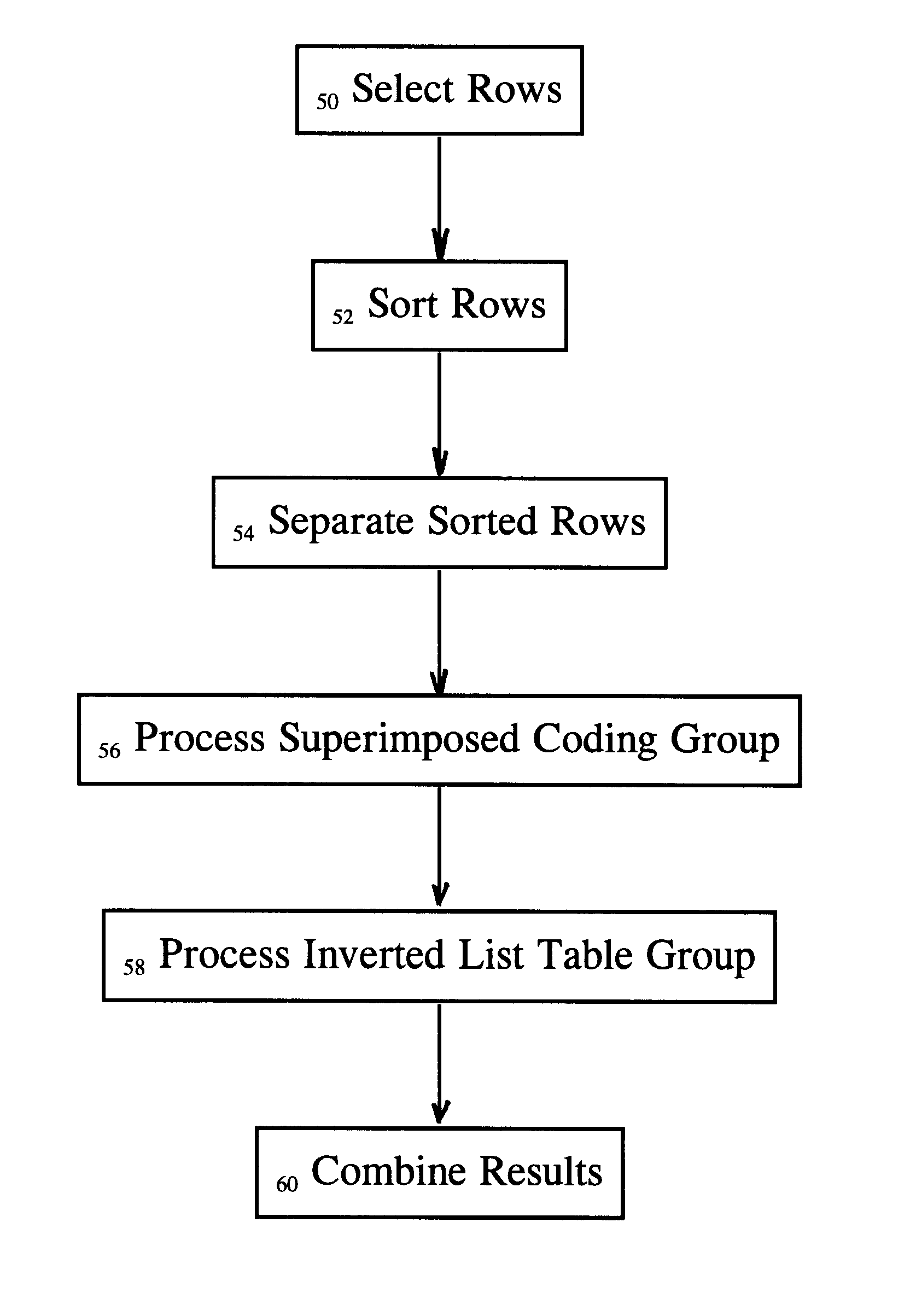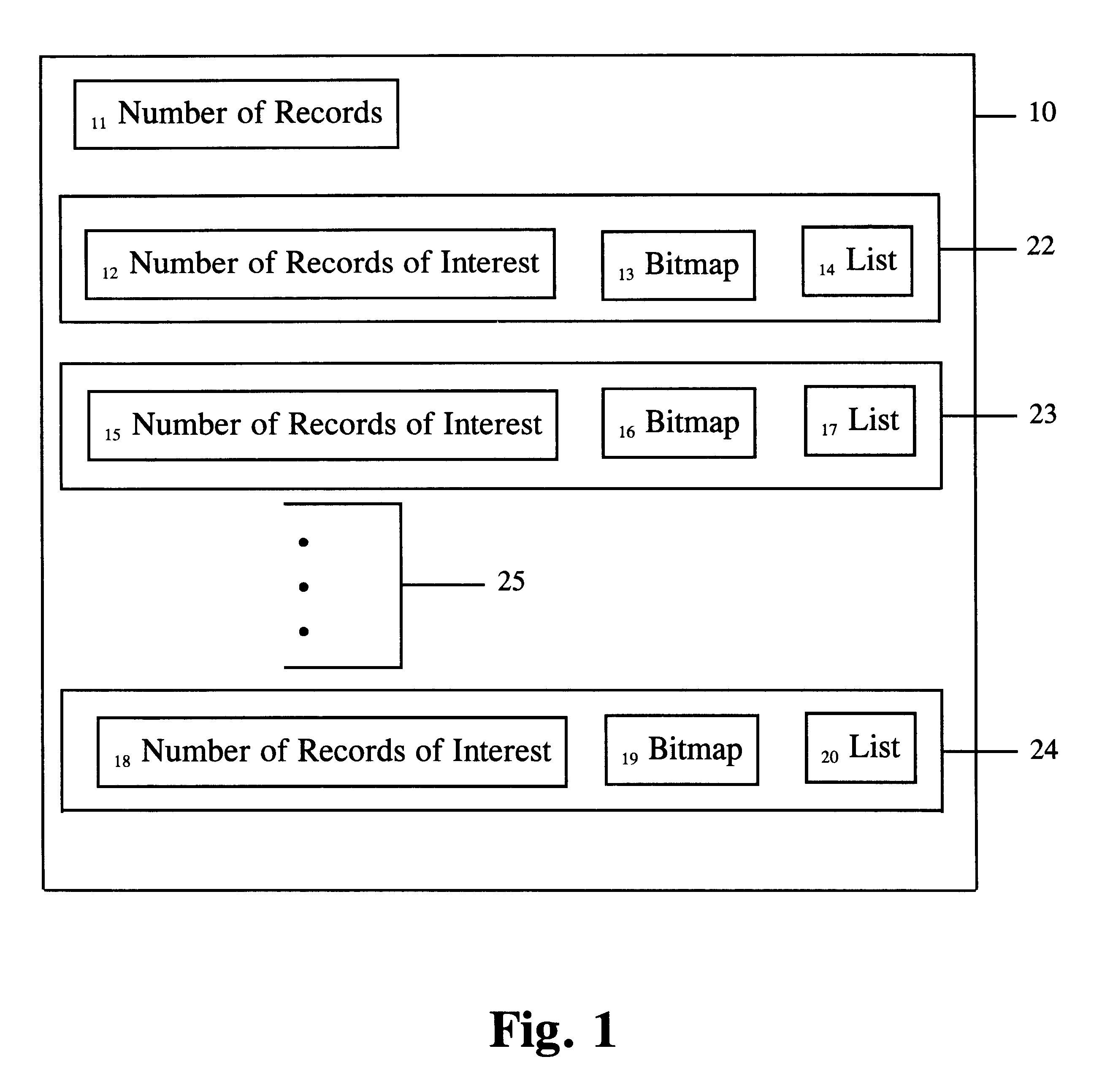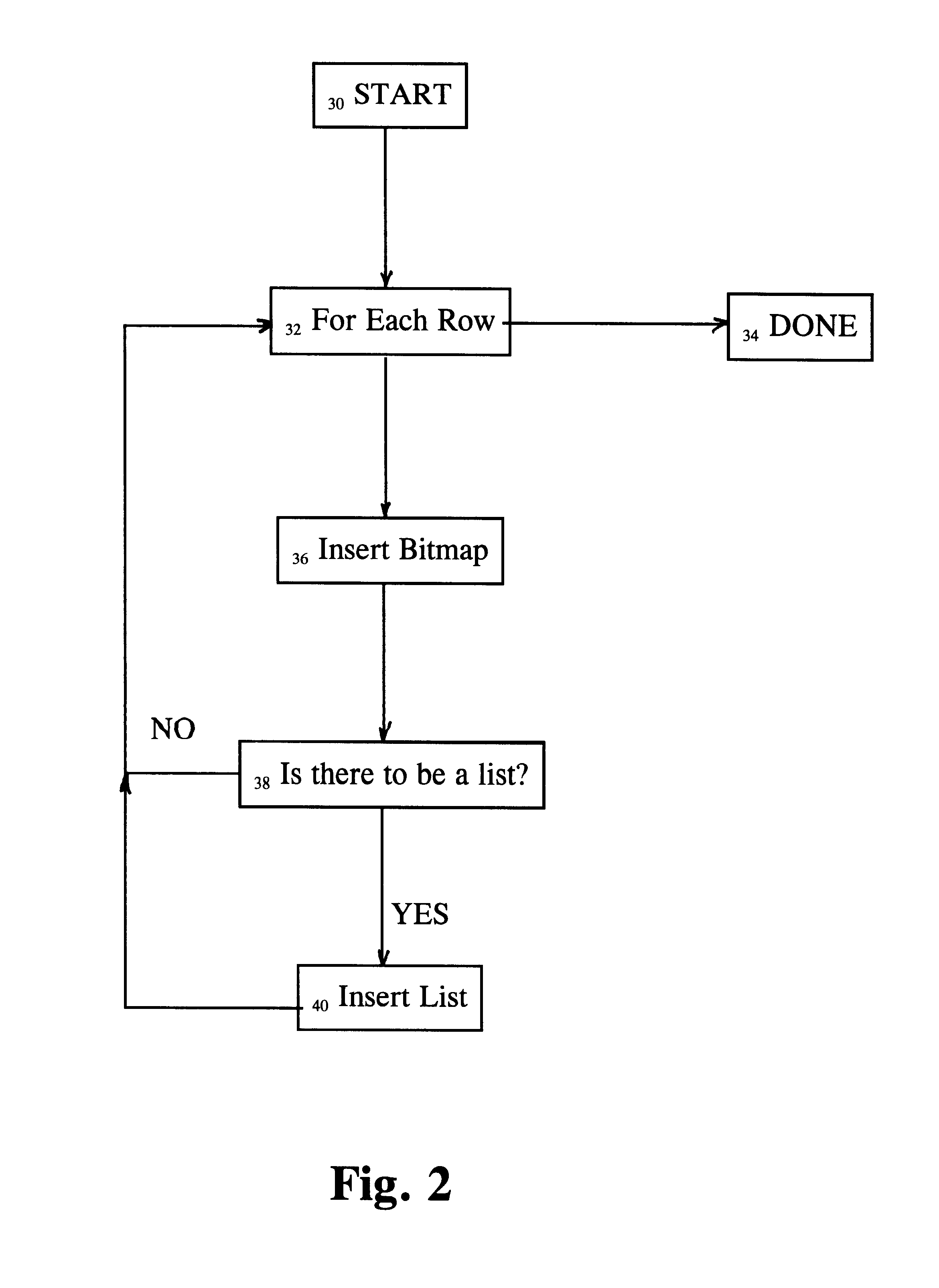Efficient implementations of constructs such as feature tables
a technology of feature tables and constructs, applied in relational databases, instruments, data processing applications, etc., can solve the problems of losing no accuracy whatsoever, overall faster operation than would be achieved, etc., to reduce computational costs, eliminate the effect of more quickly the record
- Summary
- Abstract
- Description
- Claims
- Application Information
AI Technical Summary
Benefits of technology
Problems solved by technology
Method used
Image
Examples
Embodiment Construction
The preferred embodiment is now presented. It is assumed that a suitable feature table of k rows and N Records has been constructed by means outside of the scope of this current invention, and the discussion here will focus on the optimization of the speed of access to that feature table.
FIG. 1 shows coding table 10, which encodes the subject feature table according to the invention. The number of Records, N, in the subject feature table is placed in block 11 for subsequent use. The k rows of the subject feature table are represented by k rows in the coding table, here illustrated by blocks 22, 23, and 24. Block 22 corresponds to the first row of the both the coding table and the subject feature table. Block 23 corresponds to the second row of both tables. Block 24 corresponds to the last row of both tables. The ellipsis 25 represents the rows that are omitted from FIG. 1 for clarity. Blocks 15, 16, and 17 serve the same function for the row of block 23 as blocks 12, 13, and 14, res...
PUM
 Login to View More
Login to View More Abstract
Description
Claims
Application Information
 Login to View More
Login to View More - R&D
- Intellectual Property
- Life Sciences
- Materials
- Tech Scout
- Unparalleled Data Quality
- Higher Quality Content
- 60% Fewer Hallucinations
Browse by: Latest US Patents, China's latest patents, Technical Efficacy Thesaurus, Application Domain, Technology Topic, Popular Technical Reports.
© 2025 PatSnap. All rights reserved.Legal|Privacy policy|Modern Slavery Act Transparency Statement|Sitemap|About US| Contact US: help@patsnap.com



